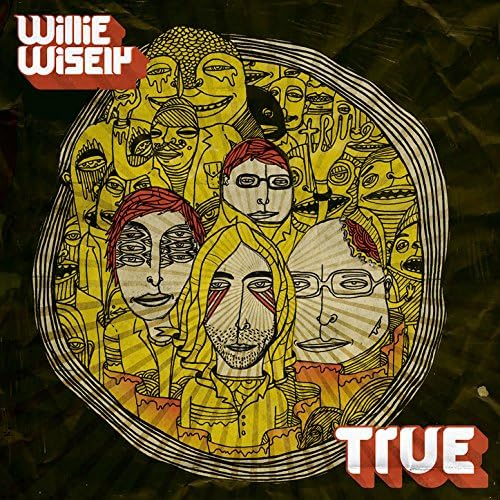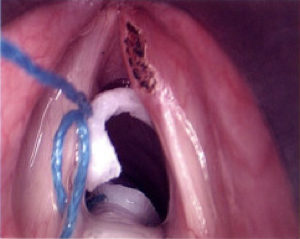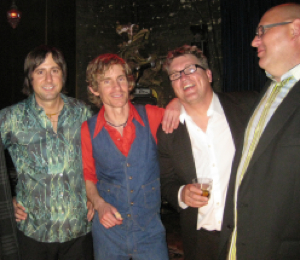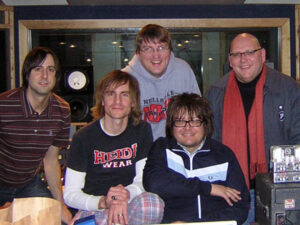True
Release Date: 2012
Track List & Lyrics
Click on song title for lyricsPeter Anderson: drums/percussion
James Voss: upright & electric bass/backing vocals
Willie Wisely: vocals/guitar/percussion/piano
Greg Wold: trombone/euphonium/trumpet
Andy Sullivan: banjo, Moog synthesizer
DJ Bonebrake: marimba, vibraphone, concert bells
Ed Ackerson: electric guitar track 7
Robert Russel: saxophone
Benno Nelson: backing vocals tracks 2 & 4
Engineered by Ed Ackerson, Peter Anderson, Willie Wisely, also Andy Sullivan, Ken Chastain, Jim Rickard
Recorded at Flowers Studio (Minneapolis)
Mastered by Chuck Zwicky
Art by Japa
Produced by Willie Wisely & Ed Ackerson
Mixed by Chuck Zwicky
Written by William John Wisely Jr. (Wisely Publishers ASCAP) except track 4 by William John Wisely Jr., James Benno Nelson & Michael H. Ruekberg (Wisely Publishers ASCAP/National Dynamite Music ASCAP/Acrimony N Cheese Music ASCAP), and track 6 by William John Wisely Jr. & Andy Dick (Wisely Publishers ASCAP/Pollywog Sounds Publishing Company BMI)
© & ℗ 2012.Ella Records. All Rights Reserved.
Top 20 Albums of 2013 One of the wittiest and most spontaneous performers you’ll find, Willie Wisely and his (4 man) Trio are charming, amusing, clever, and rocking. Listen for the inspired trombone parts! –
The original four members of Willie Wisely Trio reunite for their first album in 18 years. Peter Anderson (drums), James Voss (upright bass), Willie Wisely (guitar & vocals), and Greg Wold (trombone).
Laser Surgery & The Perfect Mirror
As road warriors in the early 1990’s, the four original members of the Willie Wisely Trio cut our teeth, playing over 400 gigs, across four years, and a couple hundred thousand miles. We climbed mountains together, musically, geographically and personally. Now, almost two decades after breaking up, well into our forties, little in our contemporary lives can approximate the experience of couch-surf touring. Back then, the road was more of a wilderness––before cell phones, before navigation systems, before email, and (in the case of our old van) before functional AC, before cassette decks were standard equipment, and (it seemed) before rust proofing. Oh yeah, and before vegetarians were allowed to cross over the state line into Iowa.
The real “work” of the music career was the time spent lugging amplifiers; suffering the theft of suitcases; playing to empty clubs; putting the moves on girls just to avoid sleeping in the van; or even sleeping underneath the van on a snowy night, trying to stay warm from the residual heat of the engine block. Misery was most the career. The forty-five minutes on stage was your remuneration––Lord knows it wouldn’t come in the form of cash.
So, when I approached Peter Anderson (drums), James Voss (upright bass) and Greg Wold (trombone) in late 2006 about recording and maybe playing again I wasn’t banking on their enthusiasm. And though it took a year to organize recording sessions, and a few more for the gigs, it seems that the importance of those freaky times, back when time was for killing, meant more to each of us than I expected.
We started recording “True” (or “Rosewood,” as it was originally called) in January of 2007 at Flowers Studio in South Minneapolis, with Ed Ackerson producing. The basic tracks were made in a marathon of live recording, always with at least the bass and drums playing simultaneously. We wanted to stay true to the routine we’d established during our first recording sessions back in 1989, deep in the basement of Delisi’s Bar, in Nordeast. It was then that we first recorded “Mule” and “Low” on a 4-track cassette deck, with the rhythm section playing live to a pre-recorded guitar take. This freed me up to engineer, and to carefully place microphones so that we would get the most out of our lo-fi recording gear. The guitar take would usually be my only attempt at the performance because many of our songs defied click tracks. Whether flawed or not, the guitar take was final once we recorded drums and bass on it. The sessions for “True”, twenty years on, had the benefit of modern technology, but we felt obliged to engage the old work mode.
Later in 2007, we held more sessions, primarily to overdub trombone and euphonium. Greg scowled at this work. He hadn’t played much in 15 years and getting his lip back while we all watched and scrutinized was a challenge. His self-loathing was frightening. It made me feel bad for awakening this reluctant monster in him. Strangely he kept stepping back to the microphone, sentimentally expressing his love for all of us. It was a reminder of the deep impression our years together had left.
In 2009 the project went dormant, because my singing voice was being consumed by a chronic sore throat. Many doctors, many dietary changes, many alternative treatments later, it continued to worsen. Creating accurate pitch became impossible. In desperation, convinced I’d never sing again, I insisted we start mixing. But the tracks weren’t fully baked and I wasn’t in any condition to be driving the process.
By early 2010, doctors would diagnose a hematoma on my right vocal cord. Knowing that the problem might be fixable with surgery gave me enough faith to finish overdubs, adding DJ Bonebrake of the band X on concert bells, vibraphone and marimba; Andy Sullivan on banjo; and Robert Russel on sax. Still, in the back of my head, the project was a requiem for my dissipated voice. Without my former self, there was no longer a compulsion to sing or play or write. It physically hurt too much. Emotionally, it wracked me as though I’d been the victim of a crime. So with a growing sense of futility, but yet a compulsion to complete our swan song, we finished overdubbing at my studio in Laurel Canyon; at Tuft’s Mansion a bed and breakfast in Neillsville, WI; and a cabin in Luck, WI.

During surgery, 2011
Later in 2010, after dropping three songs, the mixing process began, halting on many occasions as I struggled to care. Our mixer Chuck Zwicky held steady as I again and again requested changes. Each song, except the 27 minute long “Surreal,” went through ten different versions. Chuck was a saint, as the mixing process dragged on for a year and a half, or more, but would eventually end.
Now, with the vocal cord surgery almost a year past, there’s a desire to make music again––despite a chunk of uncontrollable notes in the tenor range. Many songs on “True” will never again be sung in the way I did them in the studio. That’s a frightening mortal reminder.
In 2011, for a spate of 18-year reunion shows, I figured out ways to sing, avoiding the weak ranges. Strangely, the more I pushed the voice to hoarseness, the more it came back. Inflammation around the scar tissue from the laser surgery helped to flatten the vocal cord surface, giving me back some pitch control that I thought was gone forever.
We added a lot of back catalog to the reunion sets, re-learning old tricks from over 100 vintage board tapes (see the album “Turn Up the Suck“). Clearly hearing who we were two decades ago was startling. We didn’t recognize our selves and the parts we played. Plus many of the old licks don’t come naturally any more because new musical ideas demand to be heard. During rehearsals, our growth as players and human beings illuminated how our time together had shaped us. Music vividly evokes the past and simultaneously pushes you forward.

Kitty Cat Klub, 2011
Making music is a tough road, but it’s a perfect mirror when you see those ancient reflections of yourself in the performances. The goofy lyrics (the likes of which you’ll never write again); the improbable and impossible-to-play guitar licks; the over-enthusiastic tempos; and the guileless ambition of living in a van, are a challenge to reproduce. But the summer reunion gigs proved that we will never wrestle that weird naiveté from our hearts. We were four young men, convinced that no one in the world could do what we were doing. We were right.
There are a thousand assumptions and delusions that compel a hard-working band to do the crazed stuff they do. All that energy leaves a footprint on the consciousness of those who make the noise as well as on those who listen to it. As the opening track on “True” exclaims: “Too bad your face got the boot print / so high, the price of delight.”

